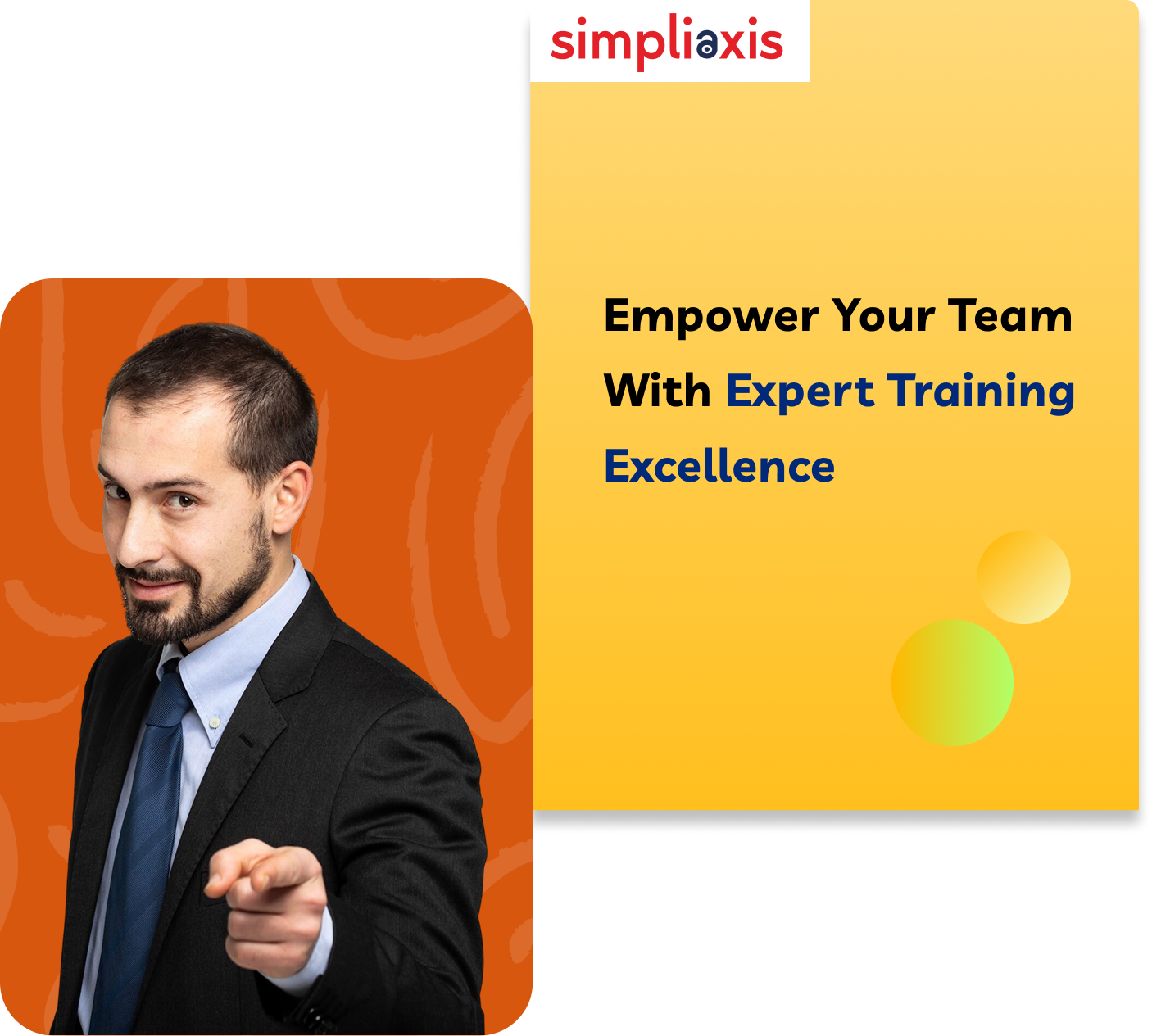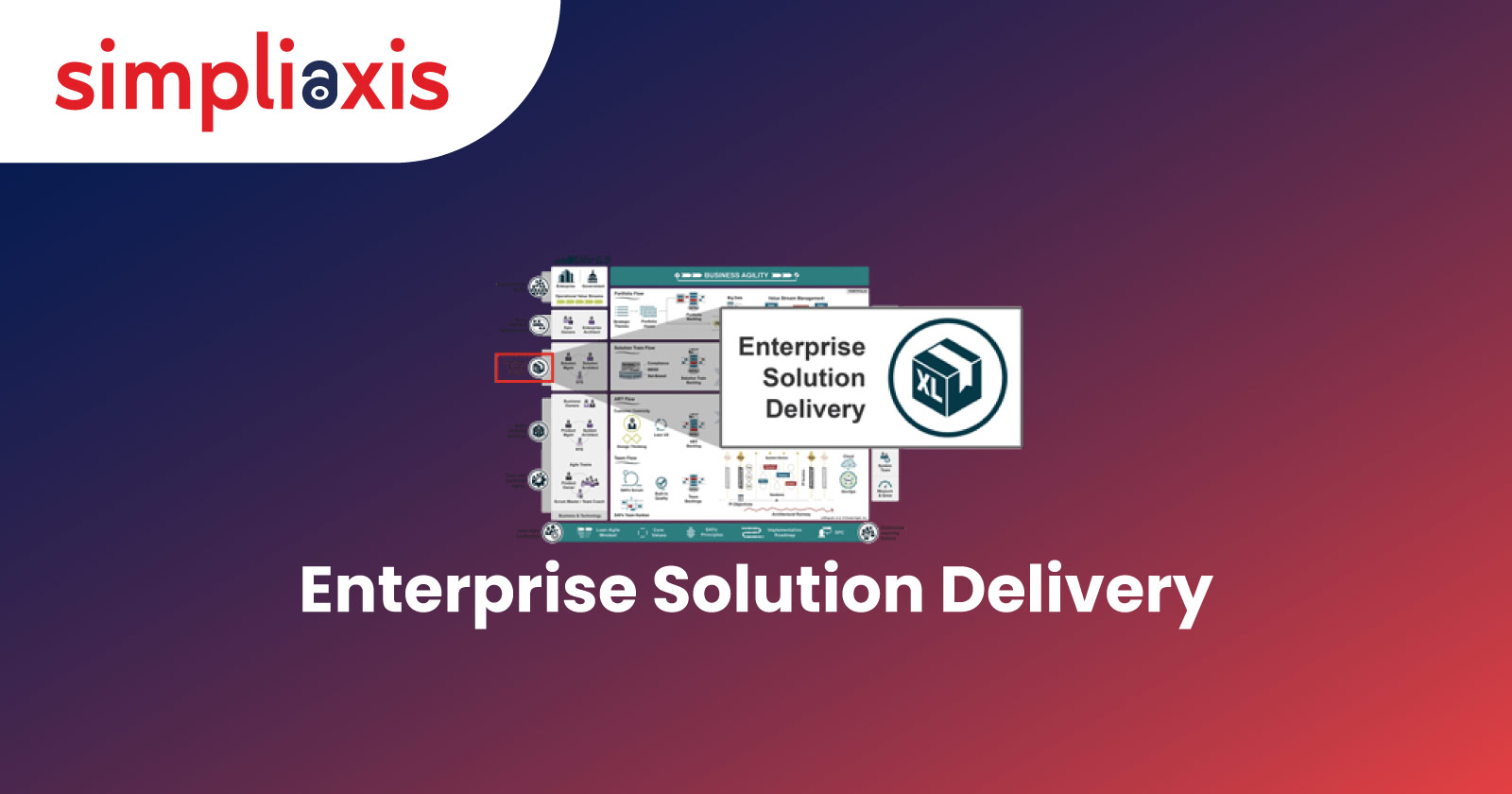In an era of digital transformation, where company competition is fierce, organizations must create a continuous delivery model so that software releases can be measured in days while also guaranteeing quality. This is why enterprises require better tools to combine their organizational agility successfully. Hence, the need for enterprise solution delivery arises.
One of the major competencies of the Scaled Agile Framework (SAFe) is enterprise solution delivery. This process helps guide Agile and Lean principles and practices. It also guides operation evolution, deployment, and software application, system, or network development.
What is enterprise solution delivery?
In simple terms, enterprise solution delivery can be defined as a guide that depicts the ways to apply Lean-Agile principles to the development, specification, operation, deployment, and evolution of some of the world's most sophisticated networks, and cyber-physical systems and software applications.
It should be known that evolving as well as creating massive enterprise solutions require monumental efforts. Hence, hundreds or even thousands of engineers are needed to build such solutions. As a result, the demand for rigorous & sophisticated practices for operations, engineering, and evolution led to the formation of the enterprise solution delivery system.
The need for enterprise solution delivery
Humanity has always been at the forefront of turning big dreams into reality with the help of professionals such as engineers, scientists, software developers, and the like. However, you need experimentation, innovation, and knowledge from different sources to turn dreams into reality. Thus, software developers & engineers bring such innovations through a lot of complex procedures including:
- Knowing the requirements
- Knowing the capability of the business
- Proper allocation & analysis of functions
- Understanding the design of the system
- Creating alternatives to the system design and learning the merits/demerits of the changes
- Simulation & modeling
- Testing & building components/systems
- Proper verification, validation, and compliance with the regulations
- Ideal deployment of the system along with support, monitoring, and updates
Systems need to evolve over time to fulfill their missions and purposes. Hence, the underlying technology must be upgraded along with new capabilities, security patches, and other improvements, which is why enterprise solution delivery is essential.
The DevOps industry has already championed CD or Continuous Delivery pipeline. But, in the current modern-day & age, there are additional practices to offer faster, more continuous value to the user, such as:
- Additive manufacturing
- Programmable hardware
- 5G
- OTA updates
- Internet of Things
Each of the above-mentioned practices has changed the way systems operate & are supported nowadays. Systems these days are released early and thereby are developed over time, which is why the CD pipeline is more important than ever before for the system's success.
The various practices of the enterprise solution delivery system
Lean systems and solution engineering
1. Continuous refinement of the variable or fixed solution intent
It should be understood that system engineering has traditionally used the ‘V’ lifecycle model, which was responsible for showcasing the essential activities required to create large systems from inception to retirement.
However, enterprise solution delivery replaces the 'V' model with concurrent & continuous engineering. Additionally, as technology improves over time, the cost of altering such systems becomes less. As a result, flow-based systems like SAFe become possible and in each increment cycle, engineers tend to explore better ideas, and ways to refine future & past features while also providing value as the markets demand.
Moreover, system builders get aligned in a shared direction. The knowledge gained from the continuous exploration will help the system builder team get feedback on how to make decisions from variable to fixed.
2. Application of multiple planning horizons
There's no denying that creating large and innovative systems poses massive risks and uncertainties. While the traditional approach to mitigating such an issue would be to create long-range and detailed plans, such an approach can become redundant due to gaps in specifications, technical discoveries, or new customer requirements.
That's why enterprise solution delivery uses roadmaps and backlogs to manage and forecast work. In that way, teams can ensure that they can deliver the most value for every increment. The items in the backlog can be changed, added, eliminated, and even rearranged as per the requirements.
On the other hand, roadmaps help engineers forecast properly so that they can commit to properly defined near-term work.
3. Architect for scale, modularity, reliability, and serviceability
It should be known that architectural choices tend to be important economic decisions because they are responsible for determining the cost & effort for changes later on. Creators of massive cyber-physical systems should always make choices that will encourage proper collaboration between the teams & the architect.
The main goal should be to create a resilient system allowing teams to independently build, test, deploy & release smaller parts of larger solutions. Hence, with the correct architecture, system components can be released without any dependence on one another.
4. Continually address compliance concerns
Unacceptable economic and social costs usually lead to the failure of massive solutions, which is why the system being created should have regular regulatory oversight to avoid such a catastrophe. Besides, the system should also follow different compliance requirements.
Furthermore, the traditional QMS (Quality Management Systems) must be altered to lean QMS, so that a proper flow of activities can be maintained.
Coordinating trains and suppliers
5. Solution abilities & components must be built & assimilated using ARTs & solution trains
It shouldn't come as a surprise to learn that systems are always built by humans. Hence, in the case of Agile, ARTs tend to be well-optimized in small groups, as a single team of a larger Agile team.
With the help of solution train, ARTs can be scaled to a larger solution along with multiple suppliers & developers. Such solution train will integrate the entire solution and thereby support learning & validation in the nascent stages.
6. Application of continuous integration
Without continuous integration, continuous delivery cannot exist. Continuous integration is responsible for checking assumptions & changes across the entire system. That's the reason why Agile teams always invest in infrastructure & automation which integrate, build and test each change made by a developer while also offering feedback on errors.
The reason why larger cyber-physical systems are difficult to integrate continuously is that:
- Unavailability of long lead-time items
- Rare end-to-end automation
- Certain restrictions
- Integration is bottlenecked by organizational boundaries
- That's why the goal is to opt for frequent partial integrations with at least one full integration to lessen the risks.
7. Managing the supply chain
Since suppliers' work also affects the supply chain, they should be well-integrated into the solution train and hence allowed to participate in related events. The supplier and customer system team should be appropriately integrated so that the supply chain can process freely and smoothly without any delay.
However, in complex cases involving supplier integration, continuous roadmaps & backlogs should also be aligned.
Continually evolve the live system
8. Creation of CD pipeline
The traditional development of a large system only focuses on building the system correctly for the first time and then lowering the changes as the system becomes operational. Hence, any innovation will require a major upgrade effort. However, with a typical CD pipeline, small developer changes are undertaken & built, which are then tested in richer environments.
It should be learned that the development of the CD pipeline starts at the same moment as the system development, thereby evolving together. Nowadays, CD pipelines are established correctly in the software development realm because they help support constant releases of new functions.
9. Evolving the deployed systems
Any investment in the CD pipeline will alter the economics of releasing the system quickly. With the help of an economical CD pipeline, a minimum system can be deployed, and then the same could be evolved. Hence, enterprises start generating revenue with less investment. Furthermore, the deployed systems should be updated & evolved.
In this case, the objective is to have an operational environment quickly so that feedback could be gained, and the value can be delivered to the consumer and thereby launch into the market before the competition does.
Conclusion
There's no denying that Agile has been highly advantageous in delivering early while also being updated frequently to ensure proper feedback is received & well-developed solutions are provided to the users. But, to apply a similar approach to more complex & larger systems, the use of SAFe enterprise solution delivery is crucial.
As a result, enterprise solution delivery will offer more flexibility to the approach of deployment & development of software systems/networks/applications. With its integration of Lean-Agile principles, SAFe enterprise solution delivery streamlines sophisticated systems and applications development, operation, and evolution. This structured approach ensures that organizations can adapt to market changes, innovate continuously, and maintain a competitive edge in the digital transformation era. And for those looking to master SAFe practices, Simpliaxis offers comprehensive SAFe courses tailored to meet the demands of today's enterprises.
















